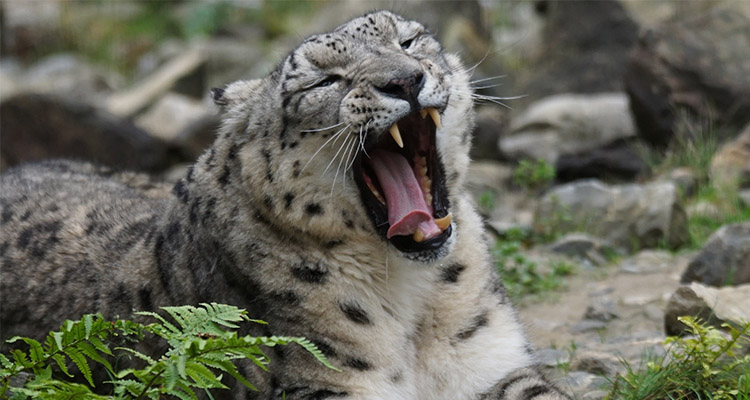After 40 years of visits, I know Oglebay’s Good Zoo so well I could walk the paths with my eyes closed. Originally a North American zoo, the facility now focuses on rare and endangered species. Conservation is key. And though small, it’s the only American Zoological Association-accredited zoo in the state of West Virginia.
Recently, the zoo introduced animal encounters. Guests can book time with red pandas, meerkats, kangaroos, wallabies, lemurs, reindeer, otters, cheetahs, the two-toed sloth, the serval and the snow leopard. It’s a rare chance to interact with endangered species.
I encountered some of these animals with zoo director Dr. Joe Greathouse, who took me on a tour. There’s a lot going on behind the scenes, and the zoo is always working toward the goals of conservation and animal well-being.
Encountering Red Pandas
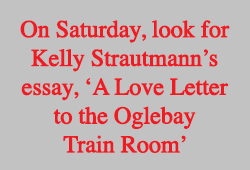 We begin in the new red panda exhibit, the former train room. On a side note, the trains’ disappearance hasn’t gone unnoticed by the public. The display became synonymous with the Good Zoo, but over time, the models began to show wear and tear. Modern model trains aren’t made with the same quality — plastic has replaced metal and it became difficult to find replacement parts. Greathouse found himself spending two to three hours a day trying to fix the trains.
We begin in the new red panda exhibit, the former train room. On a side note, the trains’ disappearance hasn’t gone unnoticed by the public. The display became synonymous with the Good Zoo, but over time, the models began to show wear and tear. Modern model trains aren’t made with the same quality — plastic has replaced metal and it became difficult to find replacement parts. Greathouse found himself spending two to three hours a day trying to fix the trains.
“We were spending an incredible amount of money trying to keep them running,” he says. Now, that money goes to animal care.
As for the red pandas, visitors will note that the animals can go inside or outside.
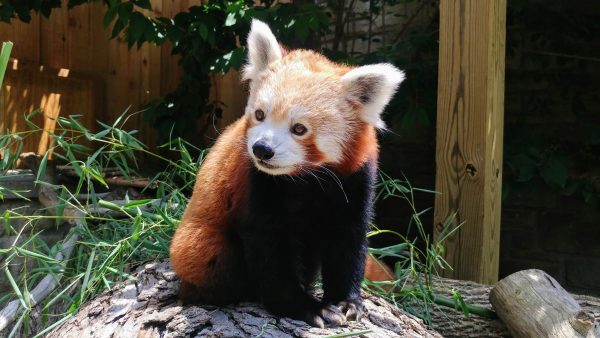
“The big thing with designing these exhibits is to give the animal a choice,” Greathouse says. “So, if the animal wants to be inside, it can be inside, and if they want to be outside they can be outside. And if they want to go off-exhibit, they can do that.”
The three pandas, Amber, Junji and Hamlet, enjoy the second largest red panda exhibit in the U.S. They’ve got climbing platforms and quiet spots. The pandas are the most popular encounter, and are booked for the next six months, so I’m thrilled to find Amber gently taking a raisin from my gloved hand as excited young faces press up against the glass. Everyone loves the red pandas, and the Good Zoo works hard to promote health. Amber is an old panda. In the wild, she wouldn’t enjoy such a long lifespan, but she’s well taken care of here. Nevertheless, she and many of the Good Zoo animals have developed health conditions found in geriatric animals. Amber has Parkinson’s Disease and takes medication. According to Greathouse, most of the zoo’s vet expenses are for geriatric care and preventative medicine.
Encountering Lemurs
Kenny is a ring-tailed lemur from Madagascar. He lives with a radiated tortoise and two mongoose lemurs, Felipe and Alana, in the main building. He’s 30 years old, twice the age of his oldest wild brethren.
“He’s a wonderful lemur,” Greathouse says as we offer raisins to Kenny and the mongoose lemurs, who sit on his shoulders. A keeper shows up with a bamboo ladder (made by a crafty WesBanco employee). She and Greathouse settle it in the lemur habitat and hide a few raisins in the nooks and crannies. Such enrichment toys keep the animals busy and content.
“We always want to come up with new ideas to make sure these guys stay happy,” Greathouse says. Just as the animals have a choice about whether they want to be on display, they also need daily stimulation. Felipe knows how to use an iPad. The lemur encounter is Dr. Greathouse’s favorite because it’s the most interactive.
As we leave the main building, we meet some docents. They’re “walking” the spurred tortoise.
“He’s out exercising,” Greathouse says. “When the spurred tortoise isn’t in his exhibit, we let him walk. He’ll walk the zoo three times in a day, and it’s 2.5 miles around the zoo.” A happy tortoise, apparently, is a healthy tortoise.
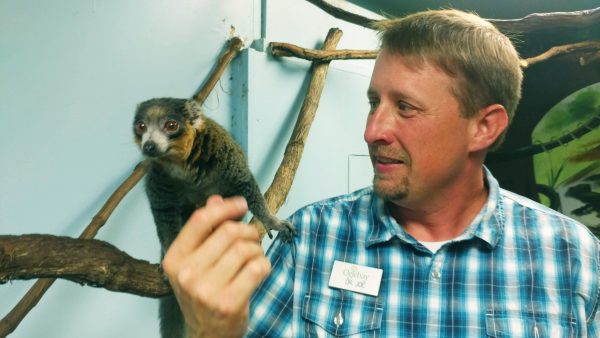
Hellbender Help & Raptor Rehab
The hospital building houses the zoo’s two biggest conservation projects: hellbenders and raptor rehabilitation. Within the unassuming building, dozens of the threatened giant salamanders prepare for their journey back into the wild.
“This is really our great conservation project, along with raptor rehab,” Greathouse says. The Good Zoo was the first in the world to hatch hellbender eggs, all collected from regional streams and raised in captivity. They’ve raised close to 2,000 hellbenders, who are then released back into their native waters, including local creeks like Wheeling and Buffalo. The zoo’s hellbenders have an above average survival rate. In Buffalo Creek, for example, 40 percent survive. The norm is 25 percent.
Adjacent to the hellbenders, raptors are indeed rehabilitating. Two red-tailed hawks and a cedar waxwing receive the necessary medical care to — hopefully — return to the wild. Keepers take care of 70 ill or injured raptors every year. The most common species rescued are red-tailed hawks and screech owls. When a bird can’t return to the wild, the zoo tries to locate an education facility where it can serve as an ambassador for its species and receive long-term care.
Otters, Bears & Zebras
The zoo’s spectacled bear is an endangered species. He’s also the youngest and most valuable breeder in captivity.
“This will probably be the next exhibit, hopefully, to get an exhibit change,” says Greathouse. “We have to raise the funds to do so. We’ll probably expand the otter exhibit.” The bear is scheduled to leave in September for a Philadelphia zoo. There, he’ll meet a Bolivian female who will introduce new genetics into the U.S. Part of this species’ future hinges on our bear, and the staff knows he belongs in a larger facility. In the 1970s, the bear habitat was considered luxurious; now we know bears need more space.
Nearby, the zebra grazes in her exhibit. She spends her time with the ostriches, while the male zebra stays off-exhibit. They trade places at night because he doesn’t like the train and often chases the female. There are only 1,200 Grevy’s zebras left, and the Good Zoo has brought three foals into the world.
“We got permission to breed the two of them. We’re a pretty strong breeding facility, and we’ll see how well that goes. We have to wait 13 months for a potential baby. It’s a lot of waiting,” Greathouse says. “At each exhibit, we try to have a key conservation species. The zebra is definitely one of our highlight conservation species.”
I asked how they tolerate our West Virginia winters. It turns out that most of the animals prefer to stay outside. Greathouse said the cheetahs would rather lie in the snow than come in, and that until 300 or 400 years ago, cheetahs inhabited India. They evolved to live in the cold and will develop warmer coats as cool weather approaches. Similarly, the snow leopard isn’t suffering in the heat. Temps in his natural habitat reach 105 in the summer, when the cats shed their heavy coats and seek shade. Like the pandas, the snow leopard has access to air conditioning, but often prefers to be outside.
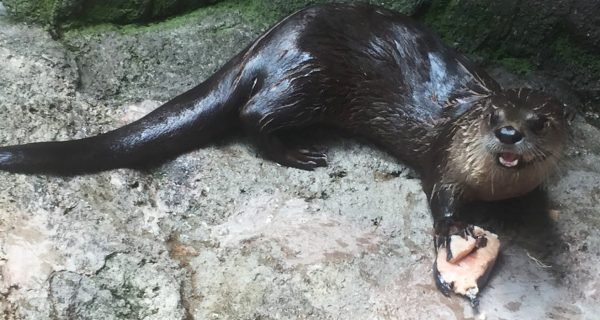
Encountering ’Roos & Wallabies
I love wallabies, so I’m looking forward to my wallaby encounter. In the heat, the red kangaroos laze in the shady holes they’ve dug, but the wallabies are all in the barn. We look for one young wallaby, Jackson, who hasn’t been fully accepted into the group, yet. He was hand-raised and thinks he’s a person. We find him lying by himself, and I pet him as the others hop around. The kangaroos and wallaby encounter isn’t the most popular, but it’s often easier to schedule and more interactive than other encounters.
Encountering Cats: Cheetahs & Serval
The cheetahs are diving face-first into a tuna-cicle. Not only does the frozen fish cube cool them down, it also keeps them busy. The new cheetah encounter is expected to be very popular. Guests can’t pet the cheetahs but can feed them meat on a stick and train them to perform veterinary care behaviors like opening their mouths and turning around for vaccinations.
Cheetahs in the wild have very specific breeding requirements. A female cheetah needs a pool of 10 males to choose from, and the Good Zoo doesn’t have the space for that. However, the cheetah exhibit is still 1.5 times bigger than it needs to be. They’re cats, and most of what they do is lie around.
Wild cheetahs are in trouble, and though the Good Zoo isn’t a breeding facility, it still contributes to conservation by providing space for older animals.
Greathouse explains, “Our main role for cheetahs, conservation-wise, is to provide room for older females and overly-represented males to make sure there’s plenty of space in other facilities. And that’s fine. It is a decent size for older individuals. It enables us to teach about cheetah conservation and not get into situations like we had in the past with some species where everybody wanted to breed. Historically, zoos had one male and one female. One and one doesn’t work [with cheetahs]. So we’re starting to do things that are best for the species and best for the entire population instead of what’s best for one particular facility.”
Nearby, the serval, Malika, perks up when she sees Dr. Greathouse, who raised her in his home with his wife, a fellow keeper. Malika was a lot of fun, but when she started sliding down the walls, it was time for her to move to her exhibit. She purrs when Greathouse speaks to her. Then, she coughs up a hairball.
“She basically acts like a housecat,” he says. “But you have to remember that she’s wild.” The minimum age for the serval encounter is 12. Guests are told not to look the cat in the eye, and smaller children often have a hard time resisting. Like the cheetah and snow leopard encounters, serval encounters happen through the fence, using meat sticks.
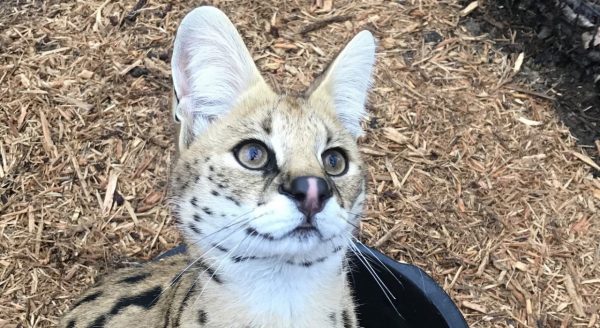
Encountering Harry, the Snow Leopard
Harry arrived from the Boston Zoo this spring, and the snow leopard encounter is also expected to be popular.
“I love Harry,” Greathouse says “He’s so laid back. Snow leopards are probably the most laid back of all the big cats.” Harry knows to approach the fence when needed, stand, shift and open his mouth. He comes when the keepers tap his food pan.
At 14, Harry is too old to breed, but the zoo embraces the possibility of a snow leopard breeding program down the road. It would require a separate facility with more space. For now, they’re focused on Harry’s well-being. Though a snow leopard can jump 30 feet in the wild, Harry’s chubby, and once failed to make it to his 6-foot platform. Greathouse says the cat looked around to make sure nobody saw his blunder.
As for space, Harry has plenty of it.
“This is a big snow leopard habitat,” Greathouse says. “San Diego’s habitat is one-third of this size, and we have a lot more vertical structure. These guys are like a housecat. Vast majority of the day, they’re asleep. Before we came down, I knew he was either going to be right there [on his log] or on his shelf [indoors].” Harry’s got an easy life, and, as is the case for a lot of Good Zoo animals, it may be that our smaller population reduces stress.
“Animals that come from the big city zoos do really relax a lot [when they arrive],” says Greathouse. “It’s not a facility where you’re going to have 2 million guests. There aren’t kids at the window yelling at them. We see about 115,000 guests [annually]. It’s a little more relaxing.”
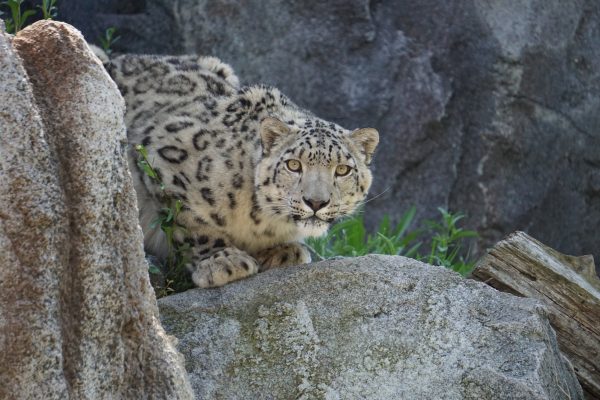
However, his first Oglebay fireworks upset Harry.
“We come up and watch the animals and assess their welfare during the fireworks,” Greathouse says. “That way if somebody gets really upset we can spend extra time with that individual and try to work with them and get them used to it.” That night, Dr. Greathouse lay down with Harry, who was breathing hard and pacing, but the cat soon snuggled up to the zoo director and fell asleep before the end of the show.
The Hard Work
Harry has bonded with his new keepers, as most of the animals do. The otters bounce up and down when a keeper comes in. Birds screech with excitement. They all seem to recognize Dr. Greathouse when he appears. The keepers are a dedicated group. In the past, most keepers were male; now the ratio of women to men is 80/20. The industry has changed in many ways and benefited from women’s involvement.
“Zoos are more welfare-based as opposed to just producing babies now,” Greathouse says. The zoo works smarter, not harder. There’s far more training, including for medical emergencies, disasters and active shooters. It’s safer for the keepers and safer for the animals; many of the latter are enjoying their retirement years in comfort. Greathouse is proud of the Good Zoo’s dedication to caring for senior endangered species. For example, Mo, the rare Central Chinese Goral, is the oldest Himalayan mountain goat in captivity.
“I think it shows we do a nice job of taking care of the animals,” he says. “We had the oldest meerkat in the country at one point. One of the oldest otters. Taboo was one of the oldest cheetahs when she passed. We also have a huge vet investment when they get old.”
There’s no government funding for the care of older, endangered species. The Good Zoo receives no tax money. While new animal encounters have helped generate revenue, the zoo still relies on grants and philanthropy, along with admission and train rides.
Attending the annual Zoo Brew is one great way to help. Guests enjoy grub and grog, and in addition to supporting the zoo, the money for VIP gift bags goes to a conservation initiative.
Greathouse says, “For the VIP bags three years ago, we supported cheetahs. Last year we did the cotton-top tamarins — they come from Columbia. This year we did snow leopard ornaments.” That money went to pay a year’s salary for two individuals working to protect snow leopards in their habitat in Tibet.
We’re lucky to share our green hilltops with Harry the snow leopard and Kenny the lemur, and we’re the smallest community in the U.S. to have our own zoo. If not for the conservation efforts of the Good Zoo, many of us would never know these endangered species. Thanks to a hard-working zoo team, the animals are in good hands.
• Laura Jackson Roberts is an environmental writer and humorist in Wheeling, W.Va. She holds an MFA in Creative Writing from Chatham University. Her work has recently appeared in Brain, Child Magazine, Vandaleer, Animal, Matador Network, Defenestration, The Higgs Weldon and the Erma Bombeck humor site. Laura is the Northern Panhandle representative for West Virginia Writers and a member of Ohio Valley Writers. She lets her kids play with sharp objects, hates earwigs, and has unusually small feet. Visit her online at www.laurajacksonroberts.com.
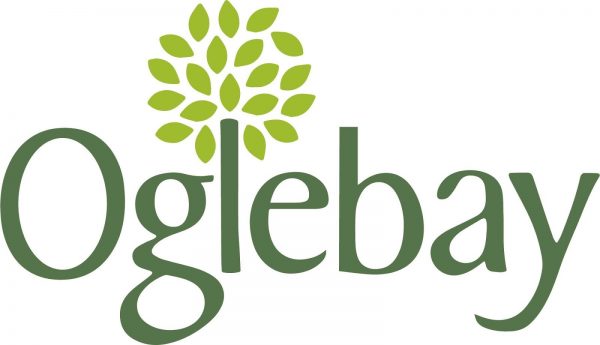
Weelunk is proud to have Oglebay
as a generous supporter.


